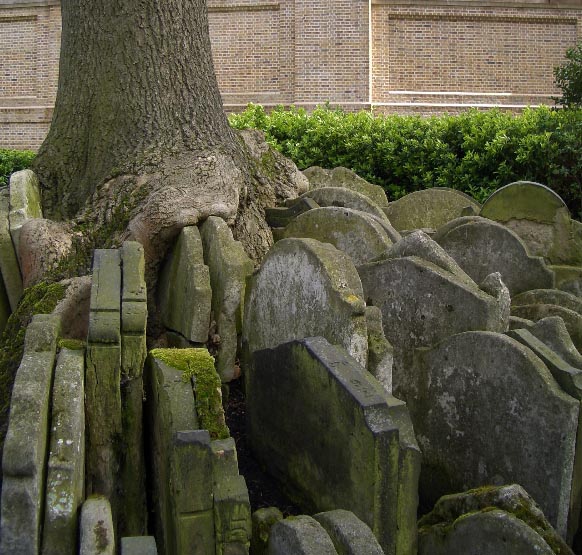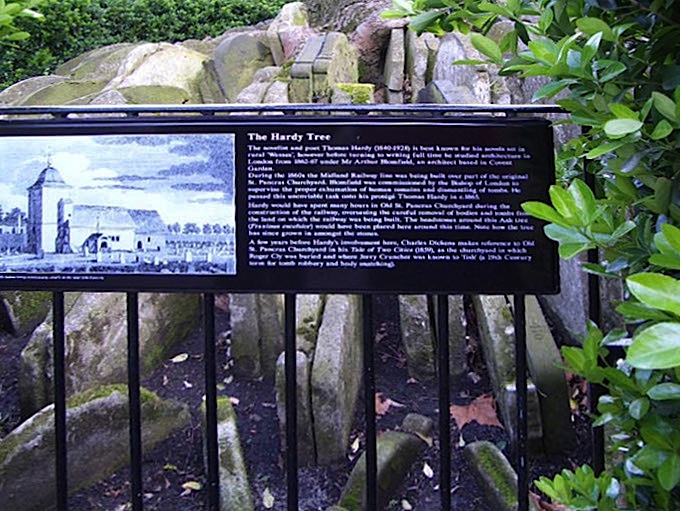

The Hardy Tree, St Pancras Churchyard, with headstones clustered round the trunk. London. Photographs and text 2006 by Jacqueline Banerjee. [You may use these images without prior permission for any scholarly or educational purpose as long as you (1) credit the photographer and (2) link your document to this URL or cite the Victorian Web in a print document. Click on the images to enlarge them.]

The plaque accompanying the tree explains that "before turning to writing full time," Thomas Hardy
studied architecture in London from 1862-67 under Mr. Arthur Blomfield, an architect based in Covent Garden. During the 1860s the Midland Railway line was being built over part of the original St. Pancras Churchyard. Blomfield was commissioned by the Bishop of London to supervise the proper exhumation of human remains and dismantling of tombs. He passed this unenviable task to his protégé Thomas Hardy in. c.l865. Hardy would have spent many hours in St. Pancras Churchyard ... overseeing the careful removal of bodies and tombs from the land on which the railway was being built. The headstones around this Ash tree (Fraxinus excelsior) would have been placed here around this time.
The visitor's attention is then drawn to the way the tree "has since grown in amongst the stones." The information on the plaque continues usefully:
A few years before Hardy's involvement here, Charles Dickens makes reference to Old St. Pancras Churchyard in his Tale of Two Cities (1859), as the churchyard in which Roger Cly was buried and where Gerry Cruncher was known to "fish" (a 19th Century term for tomb robbery and body snatching).
Links to Related Material
Last modified 19 April 2024